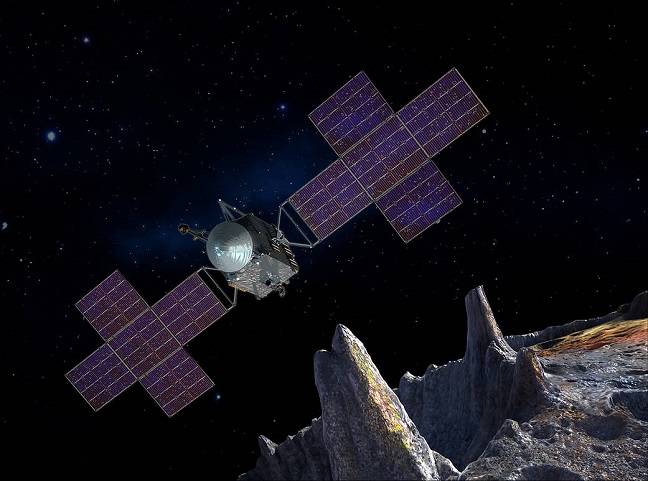Scientists Say They May Have Spotted a Huge Hidden Planet Deep in Our Solar System
For over a century, astronomers have wondered if there's an extra planet in our Solar System that we haven't been able to see yet. It seems like we get another "Planet Nine" candidate — formerly known as Planet X, before Pluto was demoted — every few years, and none have been confirmed. But the possibility has never been put to bed, either. Now, an international team of researchers have made a new detection that could be a sign of a hidden world by, poetically, unearthing what went overlooked in very old data. Their findings, reported in a study accepted for […]


For over a century, astronomers have wondered if there's an extra planet in our Solar System that we haven't been able to detect yet. It seems like we get another "Planet Nine" candidate — formerly known as Planet X, before Pluto was demoted — every few years, and none have been confirmed. But the possibility has never quite been put to bed, either.
Now, an international team of researchers have made a new detection that they say could be a sign of a hidden world — by, poetically, unearthing what went overlooked in very old data.
Their findings, reported in a study accepted for publication in the Publications of the Astronomical Society of Australia, suggest that the elusive planet could be up to five to ten times the mass of Earth, and is so far out in the Solar System that it takes 10,000 years to orbit the Sun.
"It is pretty amazing to think that something as big as Neptune could be sitting out there and no one would have ever noticed it," Gary Bernstein, an astronomer at the University of Pennsylvania who was not involved in the study, told Science. "But if you put it far enough away, it gets fainter and fainter very fast."
One of the strongest hints of an undiscovered planet lies in the Kuiper Belt, a disc of icy objects beyond the orbit of Neptune that's home to comets and dwarf planets like Pluto. According to Planet Nine truthers, the unusually clustered orbits of some of the objects there, including the dwarf planet Sedna, can be conveniently explained by the existence of a stealthy world pulling their gravitational strings.
If there is a planet lurking out there, it should reflect some sunlight that we could detect. For their study, the researchers focused on invisible light, using two infrared surveys of the night sky that were conducted 23 years apart. That extreme time gap, Science notes, would allow them to see a distant, slow-moving object like what Planet Nine is thought to be, represented as a pair of dots — one of its position before, one after.
From there, the team identified thirteen candidate dot pairs which showed positioning consistent with a moving planet. One of the pairs had the same color and brightness, suggesting that both of the dots were from the same object. This, the researchers argue, could be our mysterious undiscovered world.
"I felt very excited," lead author Terry Long Phan, an astronomer at National Tsing Hua University in Taiwan, told Science. "It's motivated us a lot."
But others in the field are skeptical. The detected signals are extremely faint and could be random noise or another object. And we could be jumping the gun on those suspicious Kuiper Belt orbits, because we have limited observations of the objects that reside there.
"It would be really cool if there was some kind of pattern there," Samantha Lawler, an astronomer at the University of Regina, told Science. "But I am not convinced, with current data, that you can't just go with the simplest explanation."
Planet Nine or no Planet Nine, we'll soon have a chance to get a closer look than ever with the launch of the Vera C. Rubin Observatory in Chile this year, which astronomers anticipate will reveal tens of thousands of objects in the Kuiper Belt.
More on space: Scientists Intrigued by Glowing Cloud Near Our Solar System
The post Scientists Say They May Have Spotted a Huge Hidden Planet Deep in Our Solar System appeared first on Futurism.







































































































































































![[The AI Show Episode 145]: OpenAI Releases o3 and o4-mini, AI Is Causing “Quiet Layoffs,” Executive Order on Youth AI Education & GPT-4o’s Controversial Update](https://www.marketingaiinstitute.com/hubfs/ep%20145%20cover.png)






























































































































![[DEALS] Mail Backup X Individual Edition: Lifetime Subscription (72% off) & Other Deals Up To 98% Off – Offers End Soon!](https://www.javacodegeeks.com/wp-content/uploads/2012/12/jcg-logo.jpg)












































































































































_Andreas_Prott_Alamy.jpg?width=1280&auto=webp&quality=80&disable=upscale#)






























































































![Android Auto light theme surfaces for the first time in years and looks nearly finished [Gallery]](https://i0.wp.com/9to5google.com/wp-content/uploads/sites/4/2023/01/android-auto-dashboard-1.jpg?resize=1200%2C628&quality=82&strip=all&ssl=1)
![Android 16’s redesign seems to be full of new, subtle animations [Video]](https://i0.wp.com/9to5google.com/wp-content/uploads/sites/4/2025/03/android-16-easter-egg-5.jpg?resize=1200%2C628&quality=82&strip=all&ssl=1)














![Apple Ships 55 Million iPhones, Claims Second Place in Q1 2025 Smartphone Market [Report]](https://www.iclarified.com/images/news/97185/97185/97185-640.jpg)







































































































